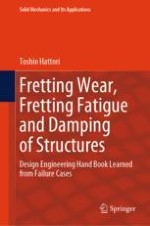2024 | OriginalPaper | Buchkapitel
5. Prevention Technology for Fretting Damage
verfasst von : Toshio Hattori
Erschienen in: Fretting Wear, Fretting Fatigue and Damping of Structures
Verlag: Springer Nature Switzerland
Aktivieren Sie unsere intelligente Suche, um passende Fachinhalte oder Patente zu finden.
Wählen Sie Textabschnitte aus um mit Künstlicher Intelligenz passenden Patente zu finden. powered by
Markieren Sie Textabschnitte, um KI-gestützt weitere passende Inhalte zu finden. powered by
